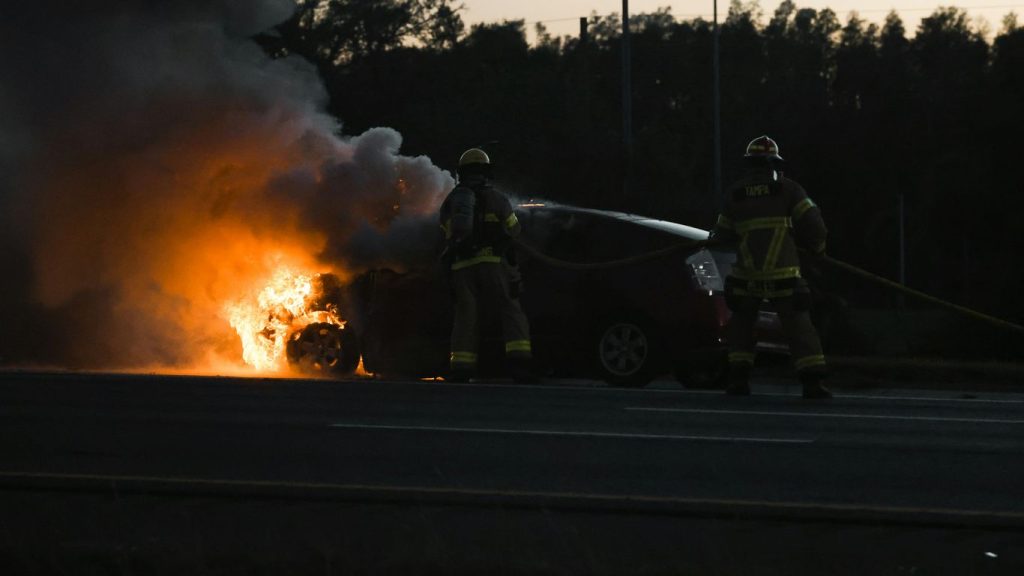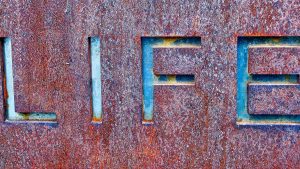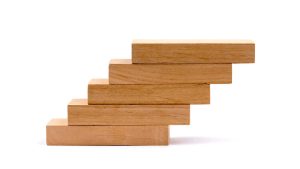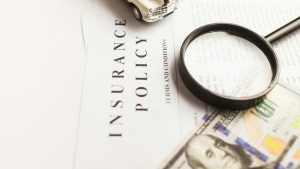Getting into a car accident is a stressful experience, and knowing what to do afterward can make a big difference. This car accident guide is here to help you through the process, from immediate steps to dealing with insurance and repairs. We’ll break down what you need to know to handle the situation smoothly.
Key Takeaways
- Understand your car insurance policy to know what’s covered after an accident.
- Prioritize safety at the scene and contact emergency services if needed.
- Gather all necessary information from other drivers and witnesses.
- Document everything with photos and notes to support your claim.
- Follow up with your insurance provider promptly to start the claims process.
Understanding Your Car Insurance Coverage

Types of Car Insurance Policies
When you get car insurance, you’ll see different types of policies. The most basic is Third Party Only (TPO). This covers damage or injuries you cause to others, but nothing happens to your own car. Then there’s Third Party, Fire & Theft (TPFT), which adds coverage if your car is stolen or catches fire. The most common and usually recommended type is Comprehensive coverage. This covers damage to other people and their property, as well as damage to your own vehicle, whether it’s from an accident, theft, or fire. Choosing the right policy depends on your car’s value and your personal risk tolerance. For newer or more valuable cars, comprehensive coverage is generally the way to go. For older cars that might not be worth much, TPO or TPFT might be sufficient.
What Your Policy Covers
Your car insurance policy is designed to protect you financially in various situations. Comprehensive coverage, for instance, will help pay for repairs to your car after a collision, regardless of who was at fault. It can also cover towing and storage costs if your vehicle is undrivable. If you cause an accident, your liability coverage will help pay for the other party’s medical bills and property damage. It’s important to know that policies differ, so always check the specifics of what’s included. Some policies might have specific limits on certain types of damage or medical expenses.
Understanding the details of your policy before an accident happens can save a lot of stress and confusion later on.
Choosing the Right Workshop
When it comes to getting your car fixed after an accident, your insurance policy might specify where you can take it. Some policies require you to use "authorized workshops," which are typically approved by the insurance company. These are often cheaper because the insurer has pre-negotiated rates. Other policies give you the freedom to choose "any workshop." While this offers more flexibility, it might come with a higher premium. If you have an older car, using an authorized workshop can be a more budget-friendly option, but make sure the list of workshops is convenient for you. For those who prefer a specific mechanic or a dealership, a policy that allows you to choose any workshop might be better, even if it costs a bit more. You can compare different car insurance plans to see which workshop options they offer.
Immediate Steps After a Collision

Being in a car accident is jarring, and it’s easy to feel overwhelmed. However, taking the right steps immediately after a collision can make a significant difference in how the situation is handled and resolved. Your safety and the safety of others should be the absolute top priority.
Ensuring Safety and Assessing the Scene
Once the impact stops, take a moment to check yourself and your passengers for any injuries. If it’s safe to do so, turn off the engine and turn on your hazard lights to alert other drivers. If your car is drivable and it’s safe to move it out of traffic, do so. If not, leave it where it is. Assess the immediate surroundings for any hazards like leaking fluids or downed power lines. If the scene is unsafe, move to a safer location if possible.
Contacting Emergency Services
Call emergency services right away, even if the accident seems minor. Dial 911 or your local emergency number. Report the accident, your location, and any injuries. A police report is often necessary for insurance claims, and having law enforcement present can help document the incident officially. You can find more information on when to file a police report in our reporting the incident section.
Exchanging Information with Other Drivers
If another vehicle is involved, you’ll need to exchange information with the other driver(s). This includes:
- Names and Contact Information: Get full names, phone numbers, and addresses.
- Insurance Details: Collect the insurance company name and policy number for each driver.
- Vehicle Information: Note down the make, model, year, and license plate number of all vehicles involved.
- Driver’s License: Ask to see their driver’s license and record the license number.
It’s also a good idea to get contact information for any passengers or witnesses who may have seen the accident. Remember to be polite and factual when exchanging information; avoid admitting fault or discussing blame at the scene.
What you say at the scene can be used later, so stick to the facts and avoid speculating about who was at fault. Gathering as much information as possible is key.
Here’s a quick reference table for the information to collect:
| Information Type | Details to Collect |
|---|---|
| Driver Information | Full Name, Phone Number, Address, Driver’s License # |
| Vehicle Information | Make, Model, Year, License Plate Number |
| Insurance Details | Insurance Company Name, Policy Number |
| Witness Information | Name, Phone Number, Address |
Remember to also document the accident scene yourself by taking photographs of the damage to all vehicles, the surrounding area, and any relevant road signs or conditions. This visual evidence can be very helpful later on. You can learn more about documenting the scene in our documenting the accident scene section.
Documenting the Accident Scene
After a car accident, it’s really important to document everything you can at the scene. This information will be super helpful later when you’re dealing with insurance companies or if there are any disagreements about what happened. Think of it as building your case right then and there.
Taking Photographs of Damage
Photos are your best friend after a crash. Make sure to get pictures of all the vehicles involved, paying close attention to the damage each one sustained. Don’t just snap a quick shot; try to capture different angles. Get close-ups of dents, scratches, broken glass, or anything that looks out of place. Also, take wider shots that show the position of the cars relative to each other and the surrounding area. This helps paint a clearer picture of the accident’s dynamics. Remember to photograph license plates and any damage to other property, like guardrails or signs.
Gathering Witness Information
If there are any witnesses who saw the accident, try to get their contact information. Ask for their name, phone number, and maybe even their email address. Even if they seem like they didn’t see much, their statement could be important later. Sometimes a witness can offer a perspective you didn’t consider. It’s a good idea to jot down a brief note about what they said they saw, if they’re willing to share.
Recording Key Details of the Incident
Beyond photos, you need to write down the important details while they’re fresh in your mind. This includes:
- Date and Time: Exactly when the accident occurred.
- Location: The specific street, intersection, or mile marker.
- Weather Conditions: Was it raining, sunny, foggy, or icy?
- Road Conditions: Were the roads wet, dry, or covered in debris?
- Your Speed: An estimate of how fast you were going.
- The Other Driver’s Information: Name, contact number, insurance details, and license plate number.
- Police Report Number: If the police came to the scene.
It’s easy to get flustered after an accident, but taking a few minutes to systematically document everything can save you a lot of trouble down the road. Don’t rely on memory alone; write it all down.
For more on what to do immediately after a collision, check out contacting emergency services. If you need to understand your insurance options, reviewing types of car insurance policies is a good next step.
Reporting the Incident to Authorities

After a car accident, it’s important to know when and how to report the incident to the authorities. This step is vital for creating an official record of what happened, which can be very helpful for insurance claims and any potential legal matters.
When to File a Police Report
Generally, you should call the police if the accident involves significant damage, injuries, or if you suspect the other driver is under the influence. In many places, a police report is mandatory for accidents involving injuries or property damage exceeding a certain dollar amount. Even if the accident seems minor, filing a police report can provide a neutral, official account of the event. For instance, in Minnesota, contacting law enforcement after a traffic accident is a key step to take. Similarly, in Ontario, while not always required to call police immediately, reporting to a Collision Reporting Centre within 24 hours is necessary.
Understanding Reporting Requirements
Reporting requirements can vary by location. Some areas have specific thresholds for when a police report is needed. For example, if the total damage is estimated to be over $1,000, a report might be required. It’s good practice to be aware of your local regulations. Generally, you’ll need to provide details about the accident, including the date, time, location, and information about the vehicles and drivers involved. Your insurance provider will also need this information to process your claim. You can often initiate the claims process online or by phone, as outlined by many insurance companies.
Submitting Necessary Documentation
After the police have been involved, you may need to submit a copy of the police report to your insurance company. It’s also important to keep copies of all other documents related to the accident. This includes:
- Photos of the damage to all vehicles involved.
- Contact information for any witnesses.
- Any medical records or bills if there were injuries.
- The other driver’s insurance and contact information.
Keeping these documents organized will make the insurance claim process smoother. For example, when making a home insurance claim, keeping originals of everything, including police reports, is advised. This principle applies to car accidents as well. You’ll want to have all your ducks in a row when you contact your insurance provider to start the claims process How To Make A Car Insurance Claim?.
It’s always better to over-document than under-document when dealing with an accident. Having a thorough record helps protect your interests and ensures that all aspects of the incident are properly accounted for.
Navigating the Insurance Claim Process

So, you’ve been in an accident. Now what? The next big step is dealing with your insurance company to get things sorted out. It might seem a bit overwhelming, but breaking it down makes it much more manageable.
Notifying Your Insurance Provider
As soon as you can, you need to let your insurance company know about the accident. Most policies have a time limit for reporting, so don’t delay. You can usually do this by calling their claims hotline or through their website or app. Be ready to provide basic information like your policy number, the date and time of the accident, and a brief description of what happened. The sooner you report it, the smoother the process will likely be.
Understanding Claim Adjuster Roles
After you report the accident, the insurance company will assign a claims adjuster to your case. This person is responsible for investigating the accident, determining fault, and assessing the damages. They’ll likely want to speak with you, any other drivers involved, and possibly witnesses. They might also review police reports and photos you’ve taken. It’s important to cooperate with the adjuster and provide them with all the information they request. Remember, their job is to evaluate the claim based on your policy and the accident details.
Providing All Required Documentation
Gathering and submitting the right documents is key to a successful claim. You’ll want to have copies of everything related to the accident. This typically includes:
- Police report (if one was filed)
- Photographs of the accident scene and vehicle damage
- Contact information for all parties involved and any witnesses
- Repair estimates from your chosen workshop
- Medical records and bills (if there were injuries)
Keep originals of all documents and make copies for your records. Missing information can slow down your claim significantly. If you’re unsure about what’s needed, your claims adjuster or insurance agent can provide a checklist. You can find more tips on filing a claim at BrokerLink.
It’s always a good idea to keep a record of all communications with your insurance company, including dates, times, and the names of people you spoke with. This can be helpful if any questions or disputes arise later on.
Seeking Medical Attention and Documentation
After a car accident, your health should be the top priority. Even if you feel fine initially, some injuries might not show symptoms right away. It’s important to get checked out by a medical professional as soon as possible after the collision. This not only helps you start any necessary treatment but also creates a record of your condition, which can be important later on.
Prioritizing Your Health
Don’t downplay any pain or discomfort you might be feeling. Things like headaches, dizziness, or stiffness could be signs of more serious issues. A doctor can properly assess your condition and rule out any hidden injuries. Remember, seeking medical attention promptly is a key step in your recovery process. If you were a passenger in the accident, it’s still vital to report the incident to the relevant auto insurance companies promptly due to strict notification deadlines. This initial step is crucial for initiating the claims process and ensuring you can seek compensation for your injuries.
Documenting All Medical Visits
Keep detailed records of every medical appointment you attend. This includes:
- Dates and times of visits
- Names of doctors and any specialists you see
- Notes on diagnoses and treatments prescribed
- Copies of all medical reports, test results, and bills
This documentation is vital for your insurance claim. It provides evidence of the extent of your injuries and the costs associated with your treatment. Having all this information organized will make the claims process smoother.
Understanding Medical Coverage
Your car insurance policy likely includes medical coverage, often referred to as Personal Injury Protection (PIP) or Medical Payments (MedPay). It’s important to understand what your specific policy covers. This might include doctor visits, hospital stays, surgery, and rehabilitation. Knowing your coverage limits and any deductibles you might have will help you manage expectations and plan for any out-of-pocket expenses. If you’re unsure about your coverage, contact your insurance provider to clarify the details. It’s always a good idea to call 911 to alert authorities when it is safe to do so after an accident. Documenting the accident scene is a crucial step in the process.
It’s easy to focus on the car damage after an accident, but your physical well-being is far more important. Make sure you get the medical attention you need and keep thorough records of everything.
Repairing Your Vehicle
After a collision, getting your car fixed is a major step. It’s not just about making it look good again; it’s about making sure it’s safe to drive. Your insurance policy plays a big role here, dictating a lot about the repair process.
Choosing a Repair Shop
Your insurance company might suggest specific repair shops, often called "authorized workshops." These shops usually have agreements with insurers, which can sometimes mean quicker processing and potentially lower costs because the insurer knows they are reasonably priced. However, this can also limit your choices. If you prefer the freedom to pick any mechanic you trust, you might have an "any workshop" clause in your policy. Be aware that choosing a shop outside the insurer’s network could mean you have to pay more upfront or deal with more paperwork.
- Authorized Workshops: Often preferred by insurers for cost control. May offer a streamlined claims process.
- Any Workshop: Gives you more freedom to choose your preferred mechanic.
- Considerations: Check if your policy restricts your choices and understand any potential differences in cost or process.
Obtaining Repair Estimates
Before any work begins, you’ll need an estimate for the repairs. The insurance adjuster will likely review this, and they might even send their own inspector to assess the damage. It’s a good idea to get a detailed written estimate from the repair shop. This estimate should break down the costs for parts, labor, and any other charges. Make sure the estimate clearly lists all the parts that need replacing and the labor hours involved. This helps ensure you and your insurer are on the same page about what needs to be done and how much it will cost.
Understanding Repair Coverage
What your insurance policy actually covers for repairs can vary. Comprehensive policies typically cover damage to your own vehicle, while third-party policies only cover damage to others. It’s important to know your policy details. Some policies might cover the full cost of repairs, while others might have a deductible – the amount you pay before the insurance kicks in. Also, if your car is older, the insurance might only cover the actual cash value of the car if it’s deemed a total loss, rather than the cost of brand-new parts. Understanding these details upfront can prevent surprises later on. For more on what to do after an accident, this guide can be helpful.
It’s always wise to keep a record of all communication with your insurance company and the repair shop. This includes estimates, invoices, and any written approvals for work done. Having this documentation can be very useful if any disputes arise later about the repairs or the costs involved.
Keeping your car in good shape doesn’t have to be a headache. Simple fixes can make a big difference in how your vehicle runs. Want to learn more about easy ways to keep your car running smoothly? Visit our website for helpful tips and guides!
Moving Forward After an Accident
Dealing with a car accident can be a lot, but remember that you’ve got this. Taking the right steps immediately after can make a big difference later on. It’s always a good idea to know your insurance options, too. Having the right coverage means you won’t have to worry as much about repair bills or medical costs if something unexpected happens. Think of it as a safety net for your car and your wallet. Stay safe out there on the road!
Frequently Asked Questions
What should I do right after a car accident?
First, make sure everyone is safe and check for injuries. If anyone is hurt or the road is blocked, call emergency services immediately. Then, exchange contact and insurance details with the other driver(s) involved. It’s important to stay calm and collect as much information as possible.
How do I document the accident scene properly?
Take photos of the damage to all vehicles, the accident location, and any injuries. Also, try to get contact information from any witnesses. Write down the date, time, and a brief description of what happened. This documentation is super helpful later on.
When do I need to file a police report?
You should file a police report if there are any injuries, significant damage to the vehicles, or if you suspect the other driver is at fault or under the influence. Some insurance companies also require a police report to process your claim.
What’s the first step in the insurance claim process?
The very first thing to do is to tell your insurance company about the accident as soon as you can. They will guide you through the next steps, which usually involve assigning a claims adjuster to look into the details of the crash.
Why is it important to seek medical attention after an accident?
Even if you feel fine, some injuries might not show up right away. Getting checked by a doctor ensures your health is prioritized and creates official records of any injuries, which is crucial for your insurance claim if needed.
What kind of car insurance do I need?
There are different types of car insurance. Comprehensive coverage usually covers damage to your own car, while third-party insurance covers damage to others. It’s smart to choose a policy that fits your needs and budget, and understand what it covers, like repairs or liability.







